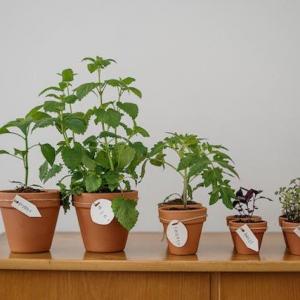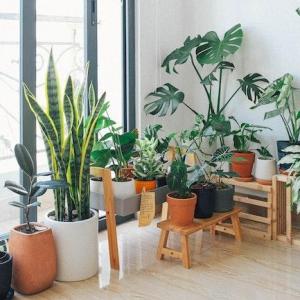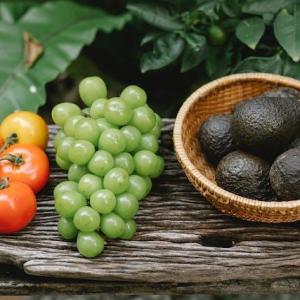
Vegetable Garden:
A vegetable garden is a versatile and practical choice for those interested in growing their own food. It allows you to have control over the quality and freshness of the produce you consume. Depending on the size of your garden, you can grow a wide variety of vegetables, such as tomatoes, peppers, lettuce, carrots, and beans. You can also experiment with unique and heirloom varieties that may not be readily available in stores. Vegetable gardens require careful planning, including considering the sun exposure, soil quality, and water requirements of different vegetables. Regular maintenance, including watering, weeding, and pest control, is necessary to ensure healthy growth and a bountiful harvest. Eating vegetables from your garden is not only rewarding but also promotes a healthier and more sustainable lifestyle.
Flower Garden:
A flower garden is all about adding beauty, color, and fragrance to your outdoor space. It can be a focal point, enhancing the aesthetics of your home and providing a delightful environment for relaxation and enjoyment. Flower gardens offer endless possibilities for creativity and design. You can choose to create a cohesive color scheme or mix a variety of hues for a vibrant and diverse display. With careful planning, you can ensure a continuous blooming season by selecting flowers that bloom at different times throughout the year. Flower gardens attract pollinators like bees and butterflies, contributing to the overall health of the ecosystem. Regular maintenance, including deadheading spent blooms and providing proper watering and fertilization, will help keep your flower garden thriving and looking its best.
Herb Garden:
An herb garden allows you to have a fresh supply of flavorful and aromatic herbs right at your fingertips. Whether you enjoy cooking or want to explore natural remedies and herbal teas, growing herbs can be both practical and enjoyable. Herbs are relatively easy to grow and can be cultivated in containers, raised beds, or dedicated garden spaces. They require well-draining soil, regular watering, and adequate sunlight. Popular culinary herbs like basil, rosemary, thyme, and parsley can add depth and flavor to your dishes. Medicinal herbs like chamomile, lavender, and echinacea can be used for their soothing and healing properties. Additionally, growing herbs can attract beneficial insects to your garden, contributing to a balanced ecosystem.Container Garden:
Container gardening provides flexibility and convenience, making it accessible to those with limited outdoor space or unique gardening situations. Whether you have a small balcony, patio, or even a windowsill, you can create a stunning container garden. The key to successful container gardening is choosing the right-sized containers, using high-quality potting soil, and providing proper drainage. You can grow a variety of plants in containers, including flowers, herbs, vegetables, and even small fruit trees or shrubs. Grouping containers of different sizes and heights can create visual interest and add depth to your space. Container gardens require regular watering and fertilization, as pots tend to dry out faster than in-ground gardens. They also offer the flexibility to move plants around, experiment with different arrangements, and bring your garden indoors during colder months.Butterfly or Pollinator Garden:
Butterfly or pollinator gardens are designed to attract and support pollinators, which are vital for the reproduction of many plants. By creating a garden filled with nectar-rich flowers and plants, you can provide a habitat and food source for bees, butterflies, hummingbirds, and other pollinators. These gardens often include a mix of annual and perennial flowers that bloom at different times throughout the year, ensuring a continuous food supply for pollinators. Incorporating native plants is particularly beneficial, as they are well-adapted to the local ecosystem and the needs of local pollinators. Butterfly or pollinator gardens require regular maintenance, including deadheading spent flowers, providing water sources like shallow dishes or birdbaths, and avoiding the use of pesticides that could harm pollinators.Water Garden:
Water gardens add a unique and serene element to your outdoor space. They can range from small container ponds to larger in-ground installations. Water features like fountains, waterfalls, or streams can be integrated into the design to create a soothing and relaxing atmosphere. Water gardens provide a habitat for aquatic plants, fish, and even wildlife like frogs or dragonflies. Aquatic plants, such as water lilies or lotus flowers, can add beauty and color to the water garden while also providing shade and shelter for aquatic life. Maintaining a water garden involves ensuring proper water circulation, filtration, and balance. Regular maintenance, such as removing debris and controlling algae growth, is necessary to keep the water clean and healthy.Rock or Zen Garden:
Rock or Zen gardens are inspired by traditional Japanese garden design principles and focus on creating a sense of tranquility and simplicity. These gardens often feature carefully placed rocks, gravel or sand, and minimalistic plantings. The arrangement of rocks and the patterns created in the gravel or sand represent natural elements like mountains, rivers, or islands. Zen gardens are designed to promote meditation, contemplation, and a sense of peace. They often incorporate elements like stone lanterns, bridges, or water basins to enhance the aesthetic appeal and symbolic meaning. Maintaining a rock or Zen garden involves raking the gravel or sand to create patterns, ensuring the rocks are properly placed, and keeping the space clean and free of weeds. These gardens require minimal watering and pruning, making them low maintenance compared to other types of gardens. Rock or Zen gardens are ideal for those seeking a space for relaxation, introspection, and finding balance in their surroundings.Exploring different types of gardens allows you to discover your gardening preferences and tailor your outdoor space to suit your needs and interests. Whether you choose a vegetable garden for fresh produce, a flower garden for visual delight, an herb garden for culinary and medicinal purposes, a container garden for flexibility, a butterfly or pollinator garden for ecological benefits, a water garden for tranquility, or a rock or Zen garden for serenity, each type offers its own unique benefits and rewards. By experimenting with different garden styles, you can create a space that reflects your personality, enhances your well-being, and brings you closer to the wonders of nature.
Article
Be the first comment
Elite Article
84,026 Views
0
0














